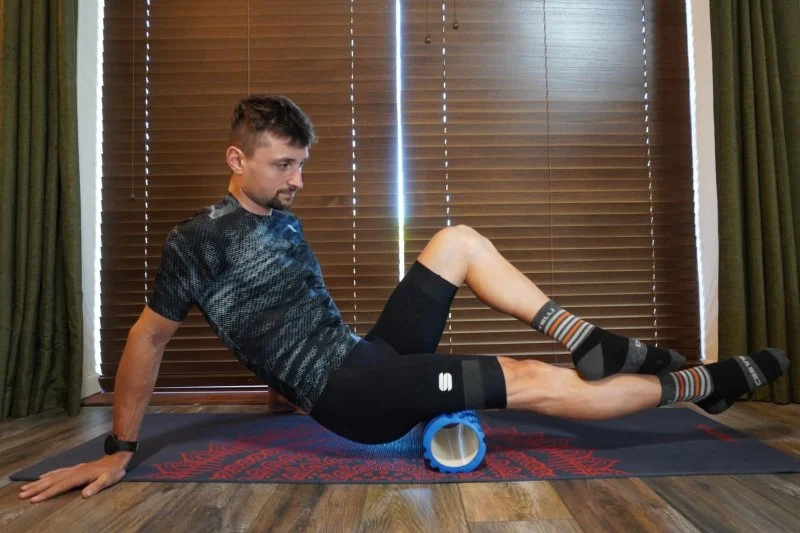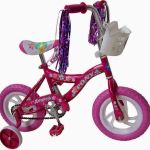
- 1 - Relieve Muscle Tension After Rides
- 2 - Improve Cycling Performance
- 3 - Injury Prevention and Recovery
- 4 - Real Cyclist Experience
- 5 - Foam Roller Techniques for Cyclists
- 6 - Long-Term Benefits for Cyclists
- 7 - Final Advice for Cyclists
1. Relieve Muscle Tension After Rides
Every cyclist knows the heavy feeling in their legs after a long ride. Foam rolling is one of the simplest and most effective ways to relieve this tension. By applying gentle pressure to muscles like the quadriceps, hamstrings, and calves, foam rollers stimulate blood flow and help release knots. This process, often called self-myofascial release, can make recovery faster and rides more enjoyable the next day.
Even professional cyclists integrate foam rolling into their cool-down routine. By doing so, they avoid prolonged stiffness that could negatively impact their training schedule.
2. Improve Cycling Performance
A common misconception is that foam rolling is only for recovery. In reality, consistent use of a foam roller can actually improve overall cycling performance. Looser muscles translate into better mobility and more efficient pedaling. When muscles are less restricted, cyclists can sustain higher cadence with less fatigue.
Think of it like fine-tuning your bike chain—when everything moves smoothly, the output increases with the same effort. The same applies to your body. Cyclists who practice regular foam rolling report greater endurance during long-distance rides.
3. Injury Prevention and Recovery
Overuse injuries are a constant threat to cyclists, especially knee pain, IT band syndrome, and lower back strain. Foam rolling helps prevent these by keeping muscles flexible and reducing stress on joints. When an injury does occur, foam rollers aid in faster recovery by promoting circulation and loosening tight fascia around the muscles.
For riders pushing through training blocks or preparing for races, this simple tool becomes an insurance policy against long downtimes. At Cycling Guider, you can find foam rollers specifically designed for endurance athletes who need durability and effective muscle penetration.
4. Real Cyclist Experience
In 2021, a semi-professional rider shared on a popular cycling forum how foam rolling saved his career. After battling IT band pain that sidelined him for months, he started a daily foam rolling routine. Within weeks, the pain decreased, and he returned to training without surgery or long-term medication. His story spread quickly, inspiring other cyclists to embrace foam rolling as a non-invasive recovery method.
This example highlights how real-world cyclists rely on such tools, not as luxury items, but as essential gear for sustaining their passion for the sport.
5. Foam Roller Techniques for Cyclists
Foam rolling is most effective when performed with proper technique. Cyclists should focus on large muscle groups first—quadriceps, calves, glutes—and then move to smaller areas like the hip flexors. Rolling slowly and pausing on tender spots enhances the release process. It is recommended to dedicate at least 10–15 minutes after each ride for maximum benefit.
Another useful method is to integrate foam rolling before a ride as part of a dynamic warm-up. This prepares the muscles for strain and reduces the risk of tightness during long hours in the saddle.
6. Long-Term Benefits for Cyclists
Beyond immediate relief, foam rolling builds long-term resilience. Regular use keeps connective tissue healthy and prevents chronic stiffness. Cyclists often report not only improved performance but also a higher sense of comfort during multi-day tours or back-to-back training sessions.
Investing in a good-quality foam roller is just as important as maintaining your bike. It’s a low-cost, high-value addition to any cyclist’s recovery plan. Cycling Guider provides carefully selected foam rollers that balance firmness and comfort, perfect for both beginners and seasoned riders.
7. Final Advice for Cyclists
Foam rolling is not just a trend—it is a proven, practical tool that every cyclist should adopt. Whether you’re training for a race, commuting daily, or enjoying weekend rides, the benefits extend from muscle recovery to injury prevention and performance enhancement. Skipping this step can mean slower recovery and increased risk of overuse injuries.
By making foam rolling part of your cycling routine, you ensure that your body remains strong and flexible, ready for the miles ahead. For high-quality foam rollers and expert recommendations, Cycling Guider is a trusted source where cyclists can find the gear that truly makes a difference.







 Billet BMX5.0 (2 reviews)
Billet BMX5.0 (2 reviews) Far East Children Bicycle Factory1.0 (1 reviews)
Far East Children Bicycle Factory1.0 (1 reviews) Archer Motorsports, Inc.4.0 (8 reviews)
Archer Motorsports, Inc.4.0 (8 reviews) YEP Bike Works4.0 (55 reviews)
YEP Bike Works4.0 (55 reviews) Gorham Bike & Ski4.0 (498 reviews)
Gorham Bike & Ski4.0 (498 reviews) Alchemy Bikes4.0 (37 reviews)
Alchemy Bikes4.0 (37 reviews) How to Teach Kids to Ride a Bike: A Step-by-Step Guide for Parents
How to Teach Kids to Ride a Bike: A Step-by-Step Guide for Parents Tips for Riding on Busy City Streets: Smart Strategies for Urban Cyclists
Tips for Riding on Busy City Streets: Smart Strategies for Urban Cyclists Best US National Parks for Mountain Biking: Ride Epic Trails Across America
Best US National Parks for Mountain Biking: Ride Epic Trails Across America Best Aero Helmets for Time Trials and Racing
Best Aero Helmets for Time Trials and Racing How to Clean and Lubricate Your Bike Chain Like a Pro
How to Clean and Lubricate Your Bike Chain Like a Pro 10 Must-Have Items for Long-Distance Cycling Trips
10 Must-Have Items for Long-Distance Cycling Trips